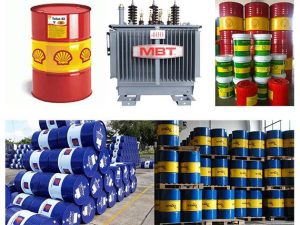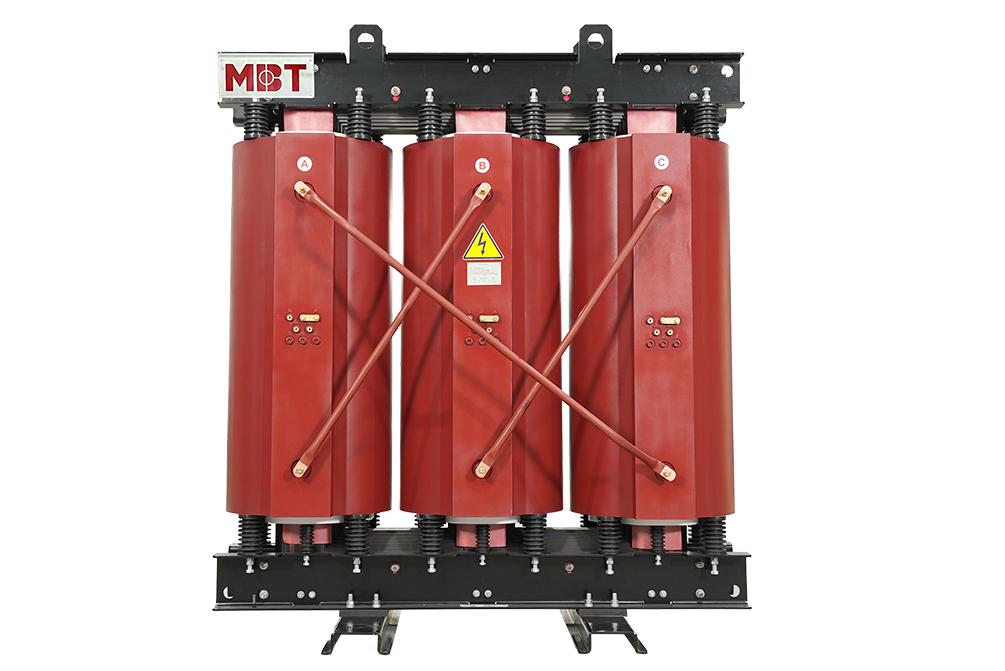
Transformer Oil Types | MBT Transformer
Transformer oil: Testing, Types, and Properties
Transformer oil types have properties that contribute to the safe and smooth operation of the transformers. Hence, it’s a critical element in electrical power systems. Let's find out more about transformer oil through the article below.
Table of Contents
1. What is the transformer oil?
3. Ideal Properties of Transformer Oil
a. Electrical Properties of Transformer Oil
b. Chemical Properties of Transformer Oil
c. Physical Properties of Transformer Oil
5. Why is Transformer Oil Testing Important?
1. What is the transformer oil?
Transformer oil (also known as insulating oil) is a special type of oil that has excellent electrical insulation and is stable at high temperatures. Oil-immersed transformers use oil for the purpose of insulation, stopping the discharge and aura discharge, and at the same time dissipating the heat of the transformer (i.e. acting as a coolant).
Transformer oil is also used to preserve the transformer’s core and windings by fully immersed them inside the oil. Another important property of the insulating oil is the prevention of oxidation of the cellulose-made paper insulation. The transformer oil likes as a barrier between the atmospheric oxygen and the cellulose – avoiding direct contact and hence minimizing oxidation. The level of transformer oil is measured using a MOG (Magnetic Oil level Gauge).

Transformer Oil
2. Types of Transformer oil
There are two main types of transformer oil used today: Paraffin-based transformer oil and naphtha-based transformer oil.
a. Naphthenic Oil
-
The mineral insulating oil is derived from particular crudes, which include extremely low n-paraffin known as wax.
-
This oil's pour point is low compared with the paraffinic type due to less wax content.
-
The boiling point of this oil is approximately 425 °C.
-
As compared with other oil, this is more readily corroded.
-
The products of oxidation are soluble within the oil.
-
The corrosion of paraffin-based crudes generates an unsolvable sludge to increase the viscosity. So it will reduce the capacity of heat transfer, service life, and overheating.
-
These oils include aromatic compounds at relatively fewer temperatures, like -40°C.
b. Paraffinic Oil
-
Mineral insulating oil derived from special crudes contains a substantial amount of n-paraffin, i.e., wax.
-
This oil's pour point is high compared with the naphthenic type due to high wax content.
-
The boiling point of this kind of oil about 530 °C.
-
Oxidation of this oil is less.
-
Oxidation products are insoluble within the oil.
-
Even though the naphthenic type is more readily corroded than paraffinic, the oxidation products are soluble within the oil that results in a decrease of problem.
In theory, Paraffin-based oil is not as easily oxidized as naphtha-based oil is, producing less sludge. Cause sludge naphtha-based oil is more soluble than paraffin-based oil, so whatever sludge naphtha-based oil generates is more easily removed than the sludge from paraffin-based oil. If sludge builds up at the bottom of a transformer container, it'll interfere with the transformer operation.
The Naphtha-based oil and paraffin-based oil do not contain dissolved wax. This wax can increase the pour point and potentially cause issues, but in warmer climates where the temperature never gets very low, this is not an issue.
However, paraffin oil is the most commonly used type of oil in transformers worldwide, despite naphtha-based oil has more apparent superiority.
3. Ideal Properties of Transformer Oil
Some specific properties of insulating oil should be considered to determine the serviceability of the oil.
The properties (or parameters) of transformer oil are:
- Electrical properties: Specific resistance, dielectric strength, dielectric dissipation factor.
- Chemical properties: Water content, acidity, sludge content.
- Physical properties: Interfacial tension, viscosity, flash point, pour point.
a. Electrical Properties of Transformer Oil
-
Dielectric Strength of Transformer Oil
The dielectric strength of transformer oil is also known as the transformer oil's breakdown voltage (BDV). Breakdown voltage is measured by observing at what voltage, sparking strands between two electrodes immersed in the oil, separated by a specific gap. A low value of BDV indicates the presence of moisture content and conducting substances in the oil.
For measuring BDV of transformer oil, a portable BDV measuring kit is generally available at the site. In this kit, oil is kept in a pot in which one pair of electrodes are fixed with a gap of 2.5 mm (in some kit, it 4mm) between them. Now slowly rising voltage is applied between the electrodes. The rate of increasing voltage is controlled at 2 KV/s and observe the voltage at which sparking starts between the electrodes – that means at which voltage dielectric strength of transformer oil between the electrodes has been broken down.
This measurement is taken 3 to 6 times in the same oil sample, and we take the average value of these readings. BDV is the primary indicator of the health of oil. So it’s a popular and important test of transformer oil and it can be easily carried out at the site.
Dry and clean oil gives BDV results, better than the oil with moisture content and other conducting impurities. The minimum breakdown voltage of transformer oil or dielectric strength of transformer oil at which this oil can safely be used in the transformer is considered 30 KV.
- Specific Resistance of Transformer Oil
This is another important property of transformer oil. The specific oil resistance is a measure of DC resistance between two opposite sides of one cm3 block of oil. Its unit is ohm-cm at a particular temperature. With an increase in temperature, the resistivity of oil decreases rapidly.
Just after charging a transformer after long shut down, the oil temperature will be at ambient temperature, and during full load, the temperature will be very high. It may go up to 90ºC at an overload condition. The insulating oil's resistivity must be high at room temperature, and it should have good value at high temperatures.
That is why specific resistance or resistivity of transformer oil should get measured at 27ºC and 90ºC.
The minimum standard specific resistance of transformer oil at 90ºC is 35 × 1012 ohm-cm, and at 27ºC, it is 1500 × 1012 ohm-cm.
- Dielectric Dissipation Factor of Tan Delta of Transformer Oil
The dielectric dissipation factor is also known as the loss factor or tan delta of transformer oil. When an insulating material is placed between the live part and the grounded part of electrical equipment, leakage current will flow. As an insulating material is dielectric, the current through the insulation ideally leads the voltage by 90º. Here voltage means the instantaneous voltage between the live part and ground of the equipment. But in reality, no insulating materials are perfect dielectric in nature.

Hence current through the insulator will lead the voltage with an angle a little bit shorter than 90º. The tangent of the angle by which it is short of 90º is called the dielectric dissipation factor or simply tan delta of transformer oil. More plainly, the leakage current through insulation does have two-component one resistive or active, and another one is capacitive or reactive. Again it is clear from the above diagram, the value of ′δ′ is also known as loss angle.
If the loss angle is small, then the resistive component of the current IR is small, which indicates a high resistive property of the insulating material. High resistive insulation is a good insulator. Hence it is desirable to have a loss angle as small as possible. So we should try to keep the value of tanδ as small as possible. The high value of this tanδ is an indication of the presence of contaminants in transformer oil.
Hence there is a clear relationship between tanδ and resistivity of insulating oil. If the value of tan-delta increases, the resistivity of the insulating oil gets decreased and vice versa. So both the resistivity test and tan delta test of transformer oil are generally not required for the same piece of the insulator or insulating oil.
In one sentence, it can be said that tanδ is a measure of the imperfection of the dielectric nature of insulation materials like oil.
b. Chemical Properties of Transformer Oil
-
Water Content in Transformer Oil
Moisture or water content in transformer oil is highly undesirable as it affects the oil's dielectric properties adversely. The water content in oil also affects the paper insulation of the winding and core of a transformer. Paper is highly hygroscopic. Paper absorbs the maximum amount of water from oil, affecting paper insulation property and reducing its life. But in a loaded transformer, oil becomes hotter; hence the solubility of water in oil increases.
As a result, the paper releases water and increases the water content in transformer oil. Thus the temperature of the oil at the time of taking a sample for the test is critical. During oxidation, acids get formed in the oil; the acids give rise to the solubility of water in the oil. Acid, coupled with further, water decompose the oil, forming more acid and water. This rate of degradation of oil increases. We measure the water content in oil as ppm (parts per million units).
The water content in an oil is allowed up to 50 ppm recommended by IS–335(1993). The accurate measurement of water content at such low levels requires a sophisticated instrument like Coulometric Karl Fischer Titrator.
- Acidity of Transformer Oil
Acidic transformer oil is a harmful property. If oil becomes acidic, the water content in the oil becomes more soluble in the oil. The acidity of oil deteriorates the insulation property of paper insulation of winding. Acidity accelerates the oxidation process in the oil. Acid also includes the rusting of iron in the presence of moisture.
The acidity test of transformer oil can be used to measure the acidic constituents of contaminants. We express the acidity of oil in mg of KOH required to neutralize the acid present in a gram of oil. This is also known as a neutralization number.
c. Physical Properties of Transformer Oil
-
Inter Facial Tension of Transformer Oil
The interfacial tension between the water and oil interface is the way to measure the attractive molecular force between water and oil. in Dyne/cm or milli-Newton/meter. Interfacial tension is exactly useful for determining the presence of oil decay products and polar contaminants. Good new oil generally exhibits high interfacial tension. Oil oxidation contaminants lower the IFT.
- Flashpoint of Transformer Oil
The Flashpoint of transformer oil is the temperature at which oil gives enough vapors to produce a flammable mixture with air. This mixture provides momentary flash on the application of flame under standard condition. Flashpoint is important because it specifies the chances of fire hazard in the transformer. So it is desirable to have a very high flash point of transformer oil. In general, it is more than 140º(>10º).
- Pour Point of Transformer Oil
It is the minimum temperature at which oil starts to flow under the standard test condition. The pour point of transformer oil is a valuable property mainly at the places where the climate is icy. If the oil temperature falls below the pour point, the transformer oil stops convection flowing and obstruct cooling in a transformer. Paraffin-based oil has a higher value of pour point than Naphtha-based oil, but in India, it does not affect the use of Paraffin oil due to its warm climate condition. The pour point of transformer oil mainly depends upon wax content in the oil. As Paraffin-based oil has more wax content, it has a higher pour point.
- Viscosity of Transformer Oil
In a few words, the viscosity of transformer oil can be said that viscosity is the resistance of flow in normal conditions. Resistance to the flow of transformer oil means obstruction of convection circulation of oil inside the transformer. Good oil should have a low viscosity so that it offers less resistance to the conventional flow of oil, thereby not affecting the cooling of a transformer. The low viscosity of transformer oil is essential, but it is equally important that the viscosity of oil should increase as little as possible with a decrease in temperature. Every liquid becomes more viscous if the temperature decreases.
4. Transformer Oil Testing
Transformer oil needs to be tested to ensure that it works for today's standards. Testing standards and procedures are defined by various international standards, and the ASTM sets most of them.
Oil testing consists of measuring the breakdown voltage and other chemical and physical properties of the oil, either through in a laboratory or portable test equipment. The transformer's lifespan is increased through proper testing, reducing the need to pay for the replacement.
Factors to Test:
Here are the most common things to look for when performing a transformer oil test:
- Standard Specification for Mineral Insulating Oil Used in Electrical Apparatus (ASTM D3487)
- Acid number (ASTM D664)
- Dielectric breakdown voltage (ASTM D877)
- Liquid power factor (ASTM D924-08)
- Interfacial tension (ASTM D971)
- Specific resistance (ASTM D1169)
- Corrosive sulfur (ASTM D1275)
- Visual examination (ASTM D1524)
Note: ASTM stands for the American Society for Testing and Materials.
These tests will help determine if the oils are clean and create a baseline of properties that need to be tested periodically. Although there are a large number of available tests, they are expensive. So it's best to use them as diagnostics if an issue occurs during primary testing.
The recommended frequency is dependant on the power and the voltage. If the results from the test are showing some red flags, the frequency will have to increase. Even if the cost of testing is high, the expense should be compared to the cost of replacing a transformer and the downtime associated with losing the transformer.
It's important to understand the difference between excessive and normal gassing rates. The amount of dissolved gas in transformer oil can be found by using a dissolved gas analysis (DGA) test. The gassing rate will vary based on the loading, transformer design, and insulation material.
5. Why is Transformer Oil Testing Important?
Transformer oil testing is important to:
- Determine the essential electrical properties of transformer oil
- Identify if a certain oil is suitable for future use
- Detect whether regeneration or filtration is needed
- Reduce oil costs and enhance component life
- Prevent untimely failures and maximize safety
=> Keep in mind, and transformer oils can last for up to 30 years. So taking the proper testing procedures now will save you thousands of dollars in the long run.














